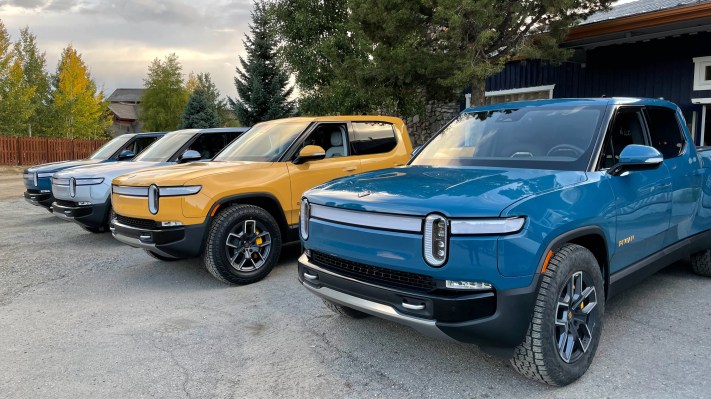Rivian raises price of electric truck 17% ahead of new dual-motor version – TechCrunch

Rivian has raised the price of its all-electric R1T pickup by 17% and R1S SUV by about 20% as the newly public automaker tries to adjust to inflationary pressure, increases in the cost of raw materials and parts as well as a prolonged chip shortage.
The price change, which was updated on the company’s website Tuesday afternoon, is part of Rivian’s broader plan to introduce a new dual-motor version of the truck and SUV in 2024, according to the company. That new propulsion system will include motors designed and manufactured by Rivian, a reflection of CEO R.J. Scaringe’s goal to vertically integrate the company. Customers were also informed via email this Tuesday afternoon about the change.
Rivian first introduced the R1T and R1S in 2018 as all-wheel drive EVs equipped with a quad-motor system that pumped up the horsepower and torque and helped the startup stand out. Until today, the base price of this quad-motor R1T and R1S were $67,500 and $70,000 respectively. The new pricing will push the base price of the R1T to nearly $79,000 and the R1S to $84,000.
The price adjustments will affect the majority of customers who pre-ordered, or reserved, the truck or SUV. Customers who were already in the final steps of completing their transaction with Rivian will be locked into that lower price, according to the company.
The rest will have to pony up the extra money.
Rivian’s chief growth officer Jiten Behl provided a lengthy statement explaining the move, citing inflation, component costs, and supply chain constraints. Behl noted that the prices for the R1T and R1S models were established in 2018. Since then, the average transaction price for new cars has risen 37%, the company said, citing data from Edmunds.
“Like most manufacturers, Rivian is being confronted with inflationary pressure, increasing component costs, and unprecedented supply chain shortages and delays for parts (including semiconductor chips),” Rivian’s chief growth officer Jiten Behl said in an emailed statement.
This rise in cost and complexity due to these challenging circumstances necessitate an increase to the prices of the R1T and R1S models we offer today — prices which were originally set in 2018. This decision will allow us to continue to offer competitive products that maintain the high standard of quality, performance and capabilities that our customers expect and deserve from Rivian.
Along with the adjusted prices for our current offerings, we are also announcing Dual-Motor AWD and Standard battery pack options for R1T and R1S, which will provide a broader range of choices for customers as part of our expanding portfolio of options, upgrades and accessories.”
Rivian said it plans to start production of dual-motor versions of the R1T and R1S in 2024. These vehicles, which will be equipped with a propulsion system designed and manufactured by Rivian, will take over the lower base price position previously held by the original quad motor variants. The company tweeted that the dual-motor AWD configuration and its 260+-mile standard battery pack was open for pre-orders.
The dual-motor R1T and R1S vehicles will still offer customers the all-wheel drive functions, albeit with some adjustments to horsepower and torque. On the upside, the range will likely increase.
The quad-motor R1T produces more than 800 horsepower, 900 pound-feet of torque and has 11,000-pound towing capacity. It also has a 314 miles EPA-rated range. The dual-motor will have a projected 600 horsepower and 600 lb-feet of torque. Rivian isn’t saying what its range will be, except that it should be more than 320 miles.
Unlike the quad system, which uses a combination of Bosch motors and electronics and Rivian inverters, this new system will be entirely from the automaker. The electric motors, which Rivian will produce at its Normal, Illinois factory, will be placed on the front and rear axles. The single-drive units actually slot into the existing space used by the quad motor system, which means the entire underlying architecture can remain unchanged.



